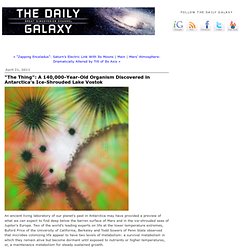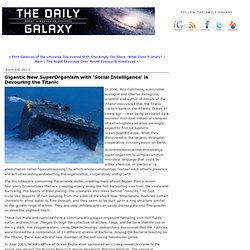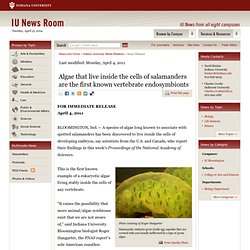

The Improvisational Brain. Credit: Flickr user maistora One summer at the annual Bremen Music Festival in Germany, Robert Levin, a classical pianist, was in the midst of improvising a passionate and wild cadenza during Beethoven’s “C Major Piano Concerto.”

A cadenza is a passage in a concerto during which the orchestra ceases and a soloist strikes out on his own, improvising within the style of the piece. Up until the early nineteenth century, many classical composers wrote space for these cadenzas within their works. Levin is one of a handful of musicians who has taken it upon himself to revive the practice of classical improvisation. He is world renowned for his ability to effortlessly extemporize in the styles of several composers, including Mozart, Beethoven, Schubert and Mendelssohn.
“I was going whole hog,” Levin said, thanks to the permission Beethoven gave his renderers to modulate or change keys during his cadenzas. Imagine the pressure: Levin is sitting at the piano. How do musicians do this? "The Thing": A 140,000-Year-Old Organism Discovered in Antarctica's Ice-Shrouded Lake Vostok. An ancient living laboratory of our planet's past in Antarctica may have provided a preview of what we can expect to find deep below the barren surface of Mars and in the ice-shrouded seas of Jupiter's Europa.

Two of the world's leading experts on life at the lower temperature extremes, Buford Price of the University of California, Berkeley and Todd Sowers of Penn State observed that microbes colonizing life appear to have two levels of metabolism: a survival metabolism in which they remain alive but become dormant until exposed to nutrients or higher temperatures, or, a maintenance metabolism for steady sustained growth. The team observed that some organisms in permafrost appear to have "protein repair enzymes that maintain active recycling of certain amino acids needed for cell repair for at least 30,000 years.
" They added that the "extremely low expenditures of survival energy enable microbial communities in extreme environments to survive indefinitely. " Human Family Tree. How did life originate? How did life originate?

Living things (even ancient organisms like bacteria) are enormously complex. However, all this complexity did not leap fully-formed from the primordial soup. Instead life almost certainly originated in a series of small steps, each building upon the complexity that evolved previously: Simple organic molecules were formed. Simple organic molecules, similar to the nucleotide shown below, are the building blocks of life and must have been involved in its origin. Multicellularity evolved. Gigantic New SuperOrganism with 'Social Intelligence' is Devouring the Titanic. In 2000, Roy Cullimore, a microbial ecologist and Charles Pellegrino, scientist and author of Ghosts of the Titanic discovered that the Titanic --which sank in the Atlantic Ocean 97 years ago -- was being devoured by a monster microbial industrial complex of extremophiles as alien we might expect to find on Jupiter's ocean-bound Europa.

What they discovered is the largest, strangest cooperative microorganism on Earth. Scientists believe that this strange super-organism is using a common microbial language that could be either chemical or electrical -a phenomenon called "quorum sensing" by which whole communities "sense" each other's presence and activities aiding and abetting the organization, cooperation, and growth.
Algae that live inside the cells of salamanders are the first known vertebrate endosymbionts. Last modified: Monday, April 4, 2011 FOR IMMEDIATE RELEASE April 4, 2011 BLOOMINGTON, Ind. -- A species of algae long known to associate with spotted salamanders has been discovered to live inside the cells of developing embryos, say scientists from the U.S. and Canada, who report their findings in this week's Proceedings of the National Academy of Sciences.

Photo courtesy of Roger Hangarter Salamander embryos grow inside egg capsules that are covered with and usually infiltrated by a type of green algae Print-Quality Photo. News: New Microscope Produces Dazzling 3D Movies of Live Cells. High-speed imaging with the Bessel beam plane illumination microscope reveals the ever-changing surface of a HeLa cell, with long, thin projections called filopodia continually extending and retracting.

Video: Laboratory of Eric Betzig/Janelia Farm A new microscope invented by scientists at Howard Hughes Medical Institute’s Janelia Farm Research Campus will let researchers use an exquisitely thin sheet of light—similar to that used in supermarket bar-code scanners—to peer inside single living cells, revealing the three-dimensional shapes of cellular landmarks in unprecedented detail. The microscopy technique images at high speed, so researchers can create dazzling movies that make biological processes, such as cell division, come alive. Liang Gao, Thomas Planchon and Eric Betzig display their new Bessel beam plane illumination microscope at HHMI’s Janelia Farm Research Campus. UCSB scientists discover how the brain encodes memories at a cellular level.
(Santa Barbara, Calif.) –– Scientists at UC Santa Barbara have made a major discovery in how the brain encodes memories. The finding, published in the December 24 issue of the journal Neuron, could eventually lead to the development of new drugs to aid memory. The team of scientists is the first to uncover a central process in encoding memories that occurs at the level of the synapse, where neurons connect with each other. "When we learn new things, when we store memories, there are a number of things that have to happen," said senior author Kenneth S. Kosik, co-director and Harriman Chair in Neuroscience Research, at UCSB's Neuroscience Research Institute. Kosik is a leading researcher in the area of Alzheimer's disease. "One of the most important processes is that the synapses –– which cement those memories into place –– have to be strengthened," said Kosik. This is a neuron. (Photo Credit: Sourav Banerjee) Part of strengthening a synapse involves making new proteins.
Evolution_poster_lg.gif (GIF Image, 1400x758 pixels)